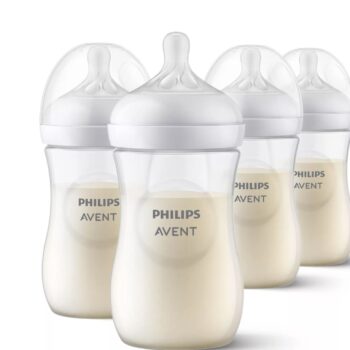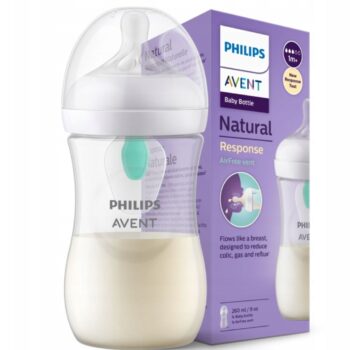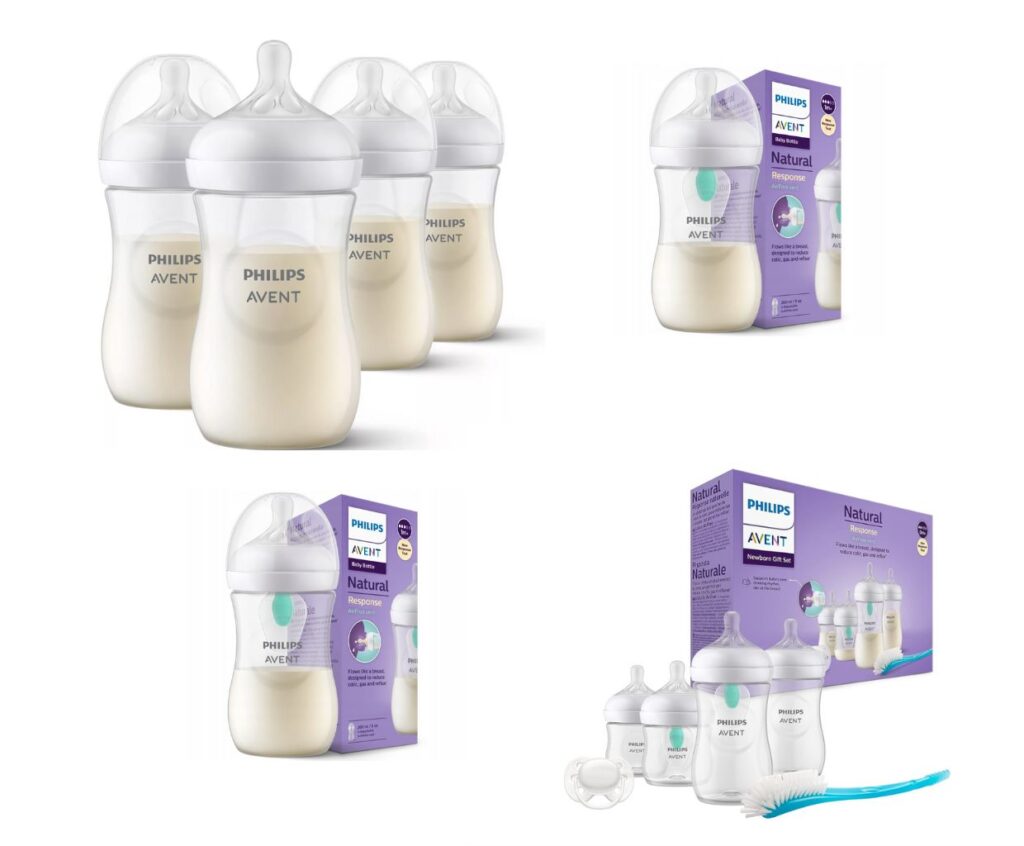Philips Avent Natural Response vs. Anti-Colic Baby Bottles: Choosing the Perfect Bottle for Your Baby’s Needs
Welcome to the world of baby bottles! As a new parent, you may be overwhelmed with the countless options available when choosing the right bottle for your little one. Two popular choices in the market are the Philips Avent Natural Response and Anti-Colic Baby Bottles.
This article will compare and contrast these two options, helping you make an informed decision that suits your baby’s needs.
Philips Avent Natural Response Bottles
The Philips Avent Natural Response bottles are designed to mimic the natural shape and movement of the breast, making it easier for your baby to switch between breastfeeding and bottle feeding. The soft, wide nipple promotes a natural latch, ensuring a comfortable feeding experience for your little one.
Key Features:
-
- Natural shape and movement of the breast
-
- Soft, wide nipple for a comfortable latch
-
- Easy transition between breastfeeding and bottle feeding
Benefits:
-
- Promotes natural feeding behavior
-
- Reduces the likelihood of nipple confusion
-
- Encourages a comfortable and relaxed feeding experience
Philips Avent Anti-Colic Bottles
Colitis can be a common concern for newborns, causing discomfort and fussiness during feeding. The Philips Avent Anti-Colic bottles are designed to reduce colic and discomfort by incorporating an anti-colic valve. This valve vents air away from the baby’s tummy, reducing the risk of excessive air intake.
Key Features:
-
- Anti-colic valve to reduce colic and discomfort
-
- Prevents the intake of excess air
-
- Easy to clean and assemble
Benefits:
-
- Reduces colic symptoms and fussiness
-
- Minimizes the risk of excessive air intake
-
- Simple and hassle-free cleaning and assembly
Choosing the Perfect Bottle
When it comes to selecting the perfect bottle for your baby, consider their individual needs and preferences. Some babies may benefit more from the natural shape and movement of the breast offered by the Philips Avent Natural Response bottles. In contrast, others may require the anti-colic features of the Philips Avent Anti-Colic bottles.
It’s important to remember that every baby is unique, and what works for one may not work for another. Don’t be afraid to try different bottles and observe how your baby responds. Ultimately, the perfect bottle is the one that allows your baby to feed comfortably and happily.
So, take your time, research, and trust your instincts. With the right bottle in hand, feeding time can become a precious bonding experience between you and your baby.
Which bottle is easier to clean and assemble: Philips Avent Natural Response or Anti-Colic
This question has no definitive answer as ease of cleaning and assembly can vary based on personal preference and experience. However, both the Philips Avent Natural Response and Anti-Colic bottles are designed with features that aim to make cleaning and assembly easier.
The Philips Avent Natural Response bottles have a wide neck design, making cleaning more accessible and allowing for better access to the bottle’s interior. Additionally, these bottles have fewer parts than other bottle brands, which can simplify assembly.
On the other hand, the Philips Avent Anti-Colic bottles have a more complex design with additional parts, such as the anti-colic vent system. While this may make assembly slightly more involved, the anti-colic feature can be beneficial for reducing gas and discomfort in babies.
Ultimately, trying out both bottle types is recommended, and determining which one feels easier to clean and assemble is based on your preferences and needs.
Are Philips Avent Natural Response bottles more suitable for breastfed babies?
There is no definitive answer to this question, as every baby is different and may have different preferences. However, Philips Avent Natural Response bottles are designed to mimic the natural shape and movement of a mother’s breast, which can help transition from breastfeeding to bottle feeding.
Some parents find that their breastfed babies take to these bottles more quickly because of their familiar design. Ultimately, trying different bottle options and seeing which one works best for your baby is essential.
I compared Philips Avent Natural Response and Anti-Colic baby bottle flow rate.
When comparing the flow rate of Philips Avent Natural Response and Anti-Colic baby bottles, there are a few factors to consider.
Firstly, the Natural Response bottles are designed to mimic the natural breastfeeding experience, with a comprehensive and flexible nipple that allows babies to latch on easily. The flow rate of these bottles is typically slower, which can benefit newborns or babies transitioning from breastfeeding.
On the other hand, the anti-Colic bottles are designed to reduce colic and discomfort in babies. These bottles have a built-in venting system that helps to minimize air intake, which can contribute to colic. The flow rate of these bottles is typically faster, which may be more suitable for older babies who are more accustomed to bottle feeding.
Ultimately, the choice between the two bottles depends on the baby’s and caregiver’s needs and preferences. It is essential to consider factors such as the baby’s age, feeding habits, and any specific feeding issues they may have. Consulting with a pediatrician or lactation consultant can also provide valuable guidance in selecting the appropriate bottle for your baby.
Philips Avent Natural Response vs. Anti-Colic Baby Bottles: Which is better for reducing gas and colic in babies?
When choosing between Philips Avent Natural Response and Anti-Colic baby bottles, it is essential to consider their features and benefits in reducing gas and colic in babies.
The Philips Avent Natural Response bottles, are designed with a comprehensive, breast-shaped nipple that promotes a natural latch and easy transitioning between breastfeeding and bottle-feeding. These bottles are known for their anti-colic valve, which allows air to flow into the bottle instead of the baby’s stomach, reducing the risk of gas and colic. The Natural Response bottles also have a flexible spiral design that helps to prevent nipple collapse during feeding.
On the other hand, Philips Avent Anti-Colic bottles are specifically designed with an anti-colic AirFree vent system. This system is integrated into the nipple and allows air to be pushed to the back of the bottle, preventing it from mixing with the milk and reducing the risk of swallowing air. The Anti-Colic bottles also feature a unique valve that prevents vacuum build-up and reduces the air the baby ingests.
Both bottle types have their advantages in reducing gas and colic. The Natural Response bottles focus on a wide nipple shape and anti-colic valve, while the Anti-Colic bottles emphasize an integrated vent system and anti-vacuum valve.
Choosing between these bottles may depend on your baby’s specific needs and preferences. Some babies may find the wide nipple of the Natural Response bottles more comfortable, while others may prefer the integrated vent system of the Anti-Colic bottles. It may be helpful to try both types and observe your baby’s feeding patterns and comfort levels to determine which works best for reducing gas and colic.



